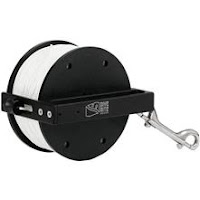Cave diving (equipment needed for cave diving)
No amount of equipment can replace or compensate for the lack of training or knowledge, but without the right equipment your ability to learn will compromised.
Here is a list of the equipment needed to participate in cave diving courses (often some of the equipment can be rented from the dive center with whom you take the courses at an additional cost), once certified as a cave diver you really want to own and take care of your equipment.
Probably you own already a part of the equipment needed, since you'll need these for regular open water dives as well.
Fins;
Absolutely no hinged or split fins.
Check out Leisurepro for known brands you can trust.
Mask;
Look for a streamlined, low volume model with a wide field of vision.
It is common practice for cave divers to carry a back up mask.
Cave & Technical divers often prefer black silicone side skirts ( they cause your pupils to dilate because of admitting less overall light.
Looking for a mask? check out these offers from Leisurepro.
Exposure protection;
A lot of Cave diver dive dry.
Check out these offers from Leisurepro:
Instrumentation;
This can either be 2 computers or a computer and a depth gauge/timer. Make sure your computer is mission capable if you plan decompression dives.
Check out these offers from Leisure pro: Computer, Guages
BCD;
Some dive centers will require experience (or sidemount certification) if a student wants to use them.
you can compare, and read reviews at Leisurepro.
Primary and backup lights;
You will need 2 LED backup lights.
Get lights specifically designed for cave diving and stay away from plastic body lights.
Check out these offers, and read reviews at Leisurepro.
Reels;
New reels come usually with spools packed to the edge with guideline, cutting of at least 30 ft will reduce the likelihood of a jam
Check out these reels at Leisurepro.
Cutting Tools;
Dive knives or big, and bulky, don't hold on to an edge and they are pretty useless dealing with entanglement.
Line cutters are a lot better as an option, most cave divers carry 2 while diving, some take trauma shears as a backup.
Check out the cutters available at Leisurepro.
Tanks, separate balanced first-stage regulators, stage and deco bottles might be on your list as well and can be found at Leisurepro.













Comments
Post a Comment